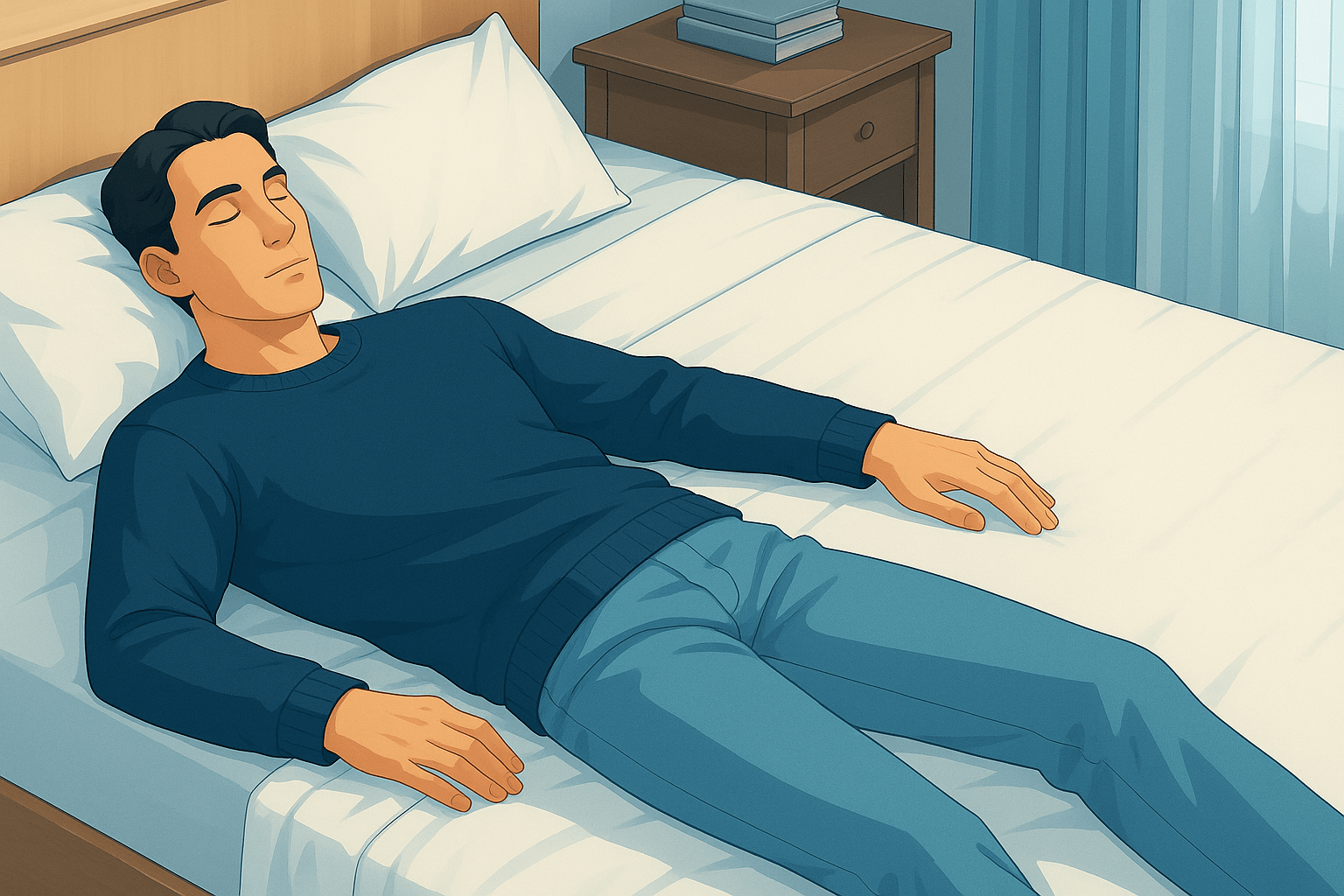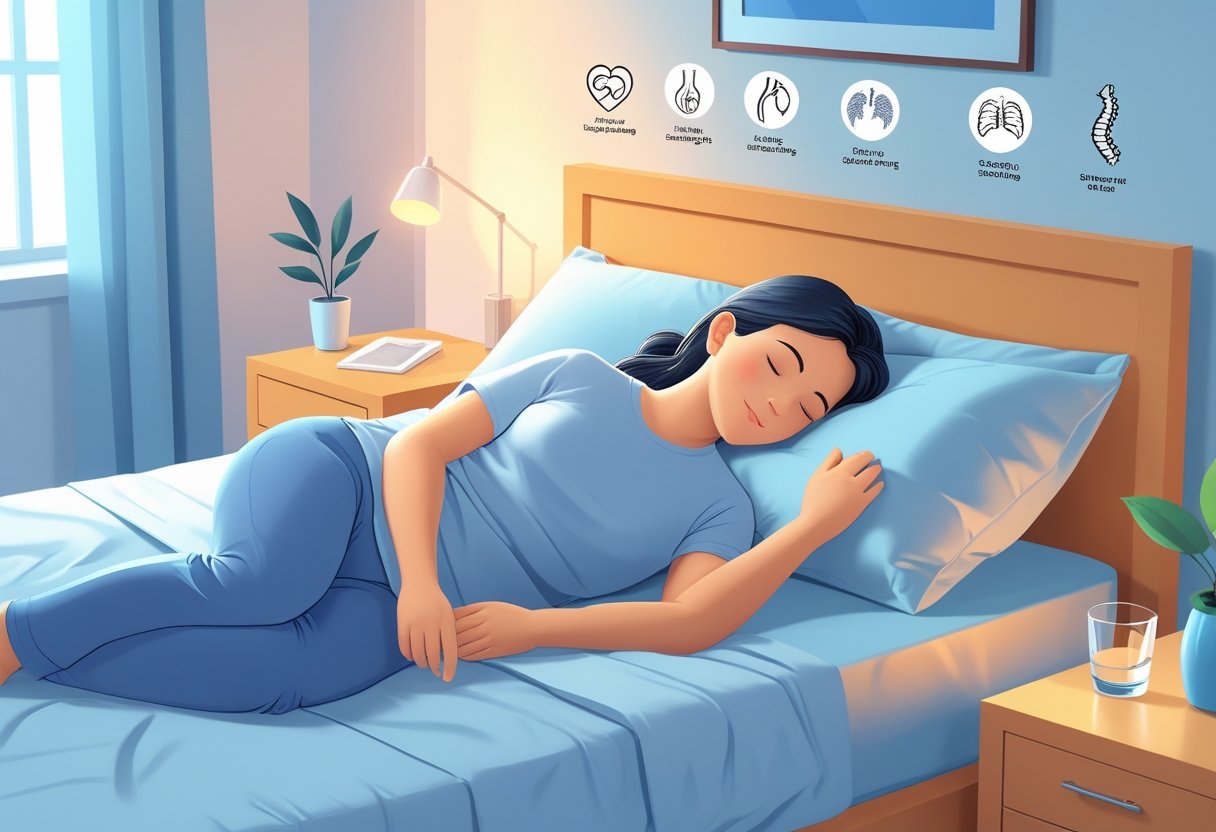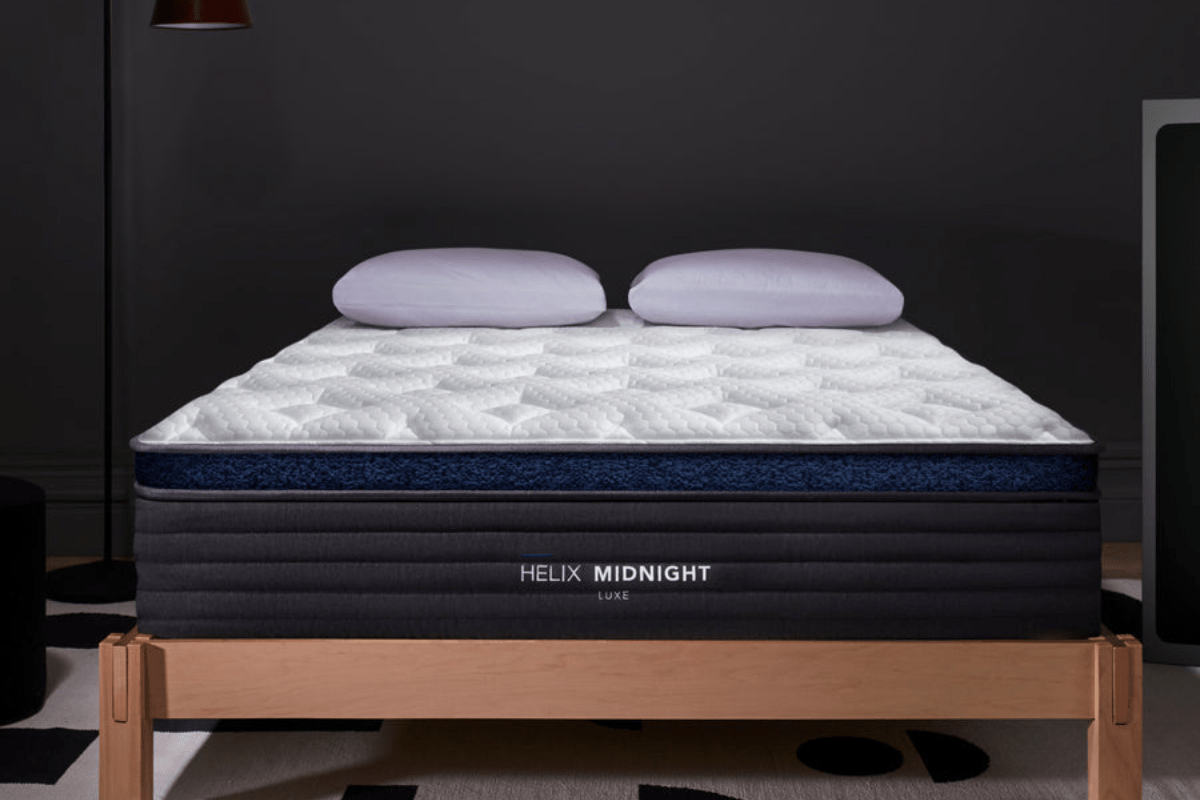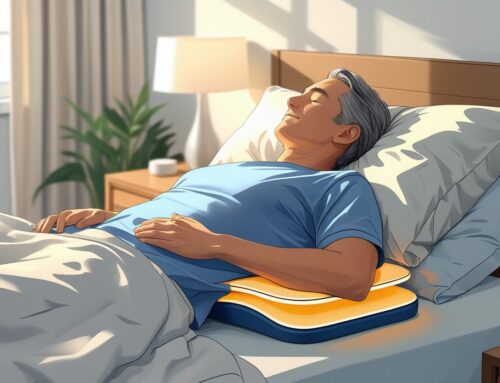Choosing the right side to sleep on can make a big difference in your overall health and comfort during the night. Many experts suggest sleeping on the left side, as it helps reduce pressure on your internal organs and promotes better blood flow. This position can also aid digestion and may help alleviate issues like acid reflux.
On the other hand, sleeping on the right side can be beneficial for those who struggle with heartburn, as it keeps the stomach elevated. Side sleeping, in general, helps keep your airway open, which can reduce snoring and even mild sleep apnea. Both the left and right sides have their own benefits, depending on what works best for your body and health needs.
It’s also important to find the right mattress and pillow to support your body while side sleeping, to prevent neck, back, or shoulder pain. Placing a small pillow between your knees can also help keep your spine properly aligned, making for a more comfortable and restful night’s sleep.
Key Takeaways
- Sleeping on the left side often supports better organ function and blood flow.
- Side sleeping can reduce snoring and help ease certain health symptoms.
- Proper support with pillows and mattress is important for side sleeping comfort.
- The right mattress is essential for maintaining alignment and reducing pressure points while side sleeping.

Side sleeping plays a big role in how the body aligns during rest. It can affect breathing, digestion, and the pressure placed on joints. Many people choose this position for comfort and health benefits, but the effects can vary depending on how exactly they sleep on their side.
Definition of Side Sleeping
Side sleeping means lying on either the left or right side of the body while resting or sleeping. This position puts the body’s weight on the side, with one arm and leg either stretched out or bent.
People who sleep this way are referred to as side sleepers. This position is known to help keep the airways open, reducing snoring and mild sleep apnea. Sleeping on the left side also helps limit acid reflux because of the stomach’s natural positioning. Side sleeping can be especially beneficial for those with back or neck pain, particularly if they use the right pillows and mattresses for support.
Prevalence of Side Sleepers
Side sleeping is the most common sleep position across the globe. Research shows that about 60-70% of adults regularly sleep on their side.
This popularity may stem from the fact that side sleeping feels natural and helps avoid discomfort in the back and neck. It’s also a preferred position for pregnant women because it helps improve blood flow. While many people switch sides during the night, most tend to favor one side as their primary sleeping position.
Side sleepers typically experience fewer disruptions in sleep due to better spinal alignment when compared to stomach sleepers.
Types of Side Sleeping Positions
There are different ways to sleep on your side, each affecting the body in its own way:
- Fetal position: Curling the knees toward the chest, this is the most common side sleeping position. It can help reduce snoring but may cause stiffness in the body.
- Log position: Lying straight on one side with both arms down, which generally supports spine alignment.
- Yearner position: Arms stretched out in front of the body, often linked to deeper breathing and a more restful sleep.
- Side sleeping with pillow support: Using a pillow between the knees can help keep the hips aligned and reduce lower back pain.
The side sleeping position you choose can significantly impact your comfort and pain levels. Proper mattress and pillow support are essential for side sleepers to maintain good posture and achieve restful sleep.
Choosing the best side to sleep on depends on your health needs and comfort preferences. Both the left and right sides offer unique benefits, impacting blood flow, digestion, and organ pressure in different ways. Understanding these differences can help you decide which side is best for restful sleep and overall well-being.
Comparing Left and Right Side Sleeping
Sleeping on either side keeps the spine aligned better than sleeping on your back or stomach. The key differences come from how each side affects your body’s organs and systems.
- Left Side: Reduces pressure on the liver and improves blood flow to the heart.
- Right Side: May ease pressure on the lungs and could be better for people with certain heart conditions.
Ultimately, the decision comes down to individual health concerns or comfort, rather than there being one “best” side to sleep on.
Benefits of Sleeping on Your Left Side
Sleeping on the left side is often recommended for those with acid reflux or heartburn, as it helps prevent stomach acid from flowing back into the esophagus. This position also promotes better circulation by reducing pressure on internal organs like the liver.
For pregnant individuals, sleeping on the left side is advised to improve blood flow to the fetus and relieve pressure on the uterus. Additionally, this position helps with lymphatic drainage, aiding in toxin removal from the body.
Many health experts suggest sleeping on the left side for better digestion and reduced heart strain, making it a popular choice for a variety of people. You can find more information on these benefits from sources like the Mayo Clinic Minute on the best sleeping positions.
Benefits of Sleeping on Your Right Side
Some people prefer sleeping on the right side for comfort or specific health reasons. It is sometimes recommended for individuals with certain heart conditions, as this position may reduce pressure on the heart by shifting its position slightly in the chest.
For some, sleeping on the right side can also improve breathing and reduce snoring. However, it may increase acid reflux symptoms in sensitive individuals, as gravity can make it easier for stomach acid to flow back into the esophagus. The right side also offers support for lung function and lymphatic drainage in ways that differ from the left side.
Finding the right side sleeping position is all about keeping the body aligned and properly supporting the head and neck. This helps reduce pressure on the joints and prevents unnecessary strain. Small adjustments can go a long way in improving both comfort and overall health.
Proper Side Sleeping Alignment
When sleeping on your side, the spine should stay straight. Your hips and shoulders need to be aligned to avoid twisting. One simple trick is to place a firm pillow between your knees to keep your hips level, which can help reduce pressure on the lower back.
Choosing a mattress that provides even support for your body is essential. It helps avoid gaps under your waist and shoulders, ensuring proper alignment. A mattress that’s either too soft or too firm can cause misalignment, leading to discomfort. Proper alignment helps reduce pain in the back and neck.
Adjusting Your Body and Head Position
Your head should rest on a pillow that keeps your neck aligned with your spine. A pillow that’s too high or too low can create strain. Ideally, the pillow should fill the space between your neck and the mattress without pushing your head up or down.
It also helps to slightly tuck your chin toward your chest to keep your neck relaxed. Avoid curling your body too tightly; a relaxed fetal position is better for your overall posture. These small adjustments can improve breathing, reduce muscle tension, and lead to better sleep quality.
Sleeping on either side can have specific effects on the body. While side sleeping offers many benefits, it can also come with some risks, including discomfort and pressure on certain organs or muscles. Being aware of these potential issues can help you choose the best side to sleep on for both health and comfort.
Risks of Sleeping on Your Left Side
Sleeping on the left side is often recommended for improving blood flow and reducing heartburn. However, it can sometimes lead to shoulder and arm pain. This occurs because the body’s weight presses on the left shoulder, which can strain the muscles over time.
While people with heart conditions often benefit from sleeping on the left side, those with shoulder injuries should be cautious. Additionally, sleeping on the left side may contribute to facial wrinkles, as one side of the face presses against the pillow throughout the night.
Risks of Sleeping on Your Right Side
Sleeping on the right side can increase pressure on certain internal organs, such as the lungs and liver. In some cases, it may worsen acid reflux symptoms, although this can vary from person to person. Some believe that sleeping on the right side may slightly reduce blood flow to the heart compared to the left side.
Doctors sometimes suggest that people with heart conditions avoid sleeping on the right side, although more research is needed. Like sleeping on the left side, right-side sleeping can put strain on the shoulder and neck muscles, potentially causing discomfort or stiffness.
Is Sleeping on Your Side Bad?
Side sleeping is generally safe and beneficial for many people. However, it can lead to muscle imbalances, particularly in the neck, shoulders, and back, if the mattress or pillow doesn’t offer enough support.
Side sleeping may also contribute to wrinkles because of the pressure it places on the skin. For those with certain health issues, such as sleep apnea or digestive concerns, side sleeping tends to help more than it harms. Using proper sleep posture and selecting the right bedding can reduce most discomforts associated with side sleeping.
Sleeping on either side offers specific health benefits that can improve digestion, heart function, and breathing quality. The side you choose to sleep on can have a big impact on how your body processes food, manages blood flow, and even reduces snoring or other breathing issues.
Digestive Health
Sleeping on the left side is widely recommended for better digestion. This position allows gravity to help move food waste efficiently from the small intestine to the large intestine. It also reduces pressure on the stomach and pancreas, allowing digestive juices to flow more smoothly.
For people with acid reflux or GERD (gastroesophageal reflux disease), left side sleeping is especially beneficial. It helps keep stomach acid lower in the stomach, reducing the chances of it rising into the esophagus and causing heartburn or discomfort.
On the other hand, sleeping on the right side can sometimes worsen acid reflux symptoms by allowing stomach acid to move into the esophagus more easily. If improving gut health is a priority, sleeping on the left side is usually a better option. You can find more information on these benefits in studies on left side sleeping and digestion.
Heart Health
Sleeping on the left side can improve heart health for some people. It makes it easier for the heart to pump blood, as it prevents putting excessive pressure on the large blood vessels that return blood to the heart.
In contrast, sleeping on the right side can slightly increase pressure on the heart, but this is generally not harmful for most people. Those with heart conditions should still consult with a doctor, as individual responses can vary.
Left side sleeping also supports lymphatic drainage and helps the body remove waste from the brain, contributing to overall cardiovascular wellness. For a more detailed study on how sleep positions affect heart health, refer to articles on heart health and sleep positions.
Breathing and Snoring
Side sleeping is known to reduce snoring and improve breathing. It keeps the airways open, unlike back sleeping, where the tongue and soft tissues can block airflow. Both left and right side sleeping can help with breathing-related conditions like sleep apnea. However, some individuals may find one side more comfortable or effective for reducing snoring.
Some groups of people benefit more from specific side sleeping habits due to health conditions or physical changes. Adjusting your sleep position can help ease symptoms or prevent complications in these cases.
Pregnancy and Side Sleeping
Pregnant individuals are often advised to sleep on their left side. This position improves blood flow to the placenta, ensuring that oxygen and nutrients reach the baby more effectively. Sleeping on the left side also reduces pressure on the liver and helps minimize swelling in the legs and feet. It can also help alleviate heartburn, which many pregnant people experience.
Using pillows to support the belly and place between the knees can increase comfort and help maintain this position throughout the night. It’s important to avoid sleeping on your back or right side in the later stages of pregnancy, as these positions can reduce circulation and cause discomfort.
Side Sleeping for People with Medical Conditions
For those with acid reflux, sleeping on the left side can provide significant relief. This position helps prevent stomach acid from flowing back into the esophagus, reducing heartburn symptoms.
People who struggle with sleep apnea or snoring may also benefit from side sleeping, as it helps keep the airways open, making breathing easier. Individuals with certain heart problems are often advised to sleep on their left side, although this may vary depending on the condition, so it’s important to seek medical advice.
For those dealing with stomach or back pain, other sleeping positions may lead to discomfort. Side sleeping can help reduce the risk of pain, and adding a pillow between the knees can provide additional support to the spine, making sleep more comfortable.
To sleep well on your side, comfort and proper support are key. This involves choosing the right bedding and making small adjustments to your setup. These steps help keep your body aligned and make side sleeping more comfortable.
Choosing the Right Pillow and Mattress
A pillow that supports your head and neck is essential for keeping your spine straight. Side sleepers should look for a pillow thick enough to fill the space between the shoulder and head. Memory foam or latex pillows are great options because they contour to the shape of your neck, providing solid support.
Your mattress should strike a balance—firm enough to support your body but soft enough to cushion your hips and shoulders. A medium-firm mattress is often ideal, as it provides the right mix of support and comfort. If the mattress is too soft, your body may sink, causing misalignment. If it’s too firm, pressure points can develop, leading to discomfort.
Placing a pillow between your knees is another helpful tip. It keeps your hips aligned and reduces strain on the lower back, making side sleeping more comfortable. This small adjustment plays a big role in achieving a proper side sleeping position.
Improving Comfort and Support
Making small adjustments to your body position while you sleep can help reduce discomfort and improve the quality of your rest. It’s a good idea to keep your legs slightly bent with your knees stacked to avoid twisting your hips, which can lead to strain.
Wearing loose, comfortable clothing at night can also help by allowing for unrestricted movement while you sleep. Using a body pillow or placing cushions along your back can help prevent you from rolling onto your back or stomach during the night, keeping you in your ideal side sleeping position.
For extra support, practicing side sleeping on a firm surface or gradually increasing the amount of time spent on your side can help retrain your body. These small changes can make a big difference in maintaining a comfortable and consistent side sleeping habit.
The right mattress is crucial when it comes to finding the best side to sleep on. A mattress that provides the right balance of support and cushioning is essential for proper alignment and comfort. For side sleepers, a medium-firm mattress is often ideal because it supports the body while also allowing for enough cushioning around the hips and shoulders.
One great option for side sleepers is the Helix Midnight Luxe mattress. Known for its comfort and support, the Helix Midnight Luxe is designed with memory foam and pocketed coils, offering contouring support that relieves pressure points in key areas like the hips and shoulders. Its medium-firm feel makes it a great choice for side sleepers looking for the best side to sleep on, as it ensures proper spinal alignment while providing comfort throughout the night.
With the right mattress, side sleeping becomes much easier to maintain, reducing the risk of discomfort and allowing for a more restful night’s sleep. The Helix Midnight Luxe can make a significant difference for those trying to find the best side sleeping position, as it offers both the support and comfort needed to improve sleep quality.











